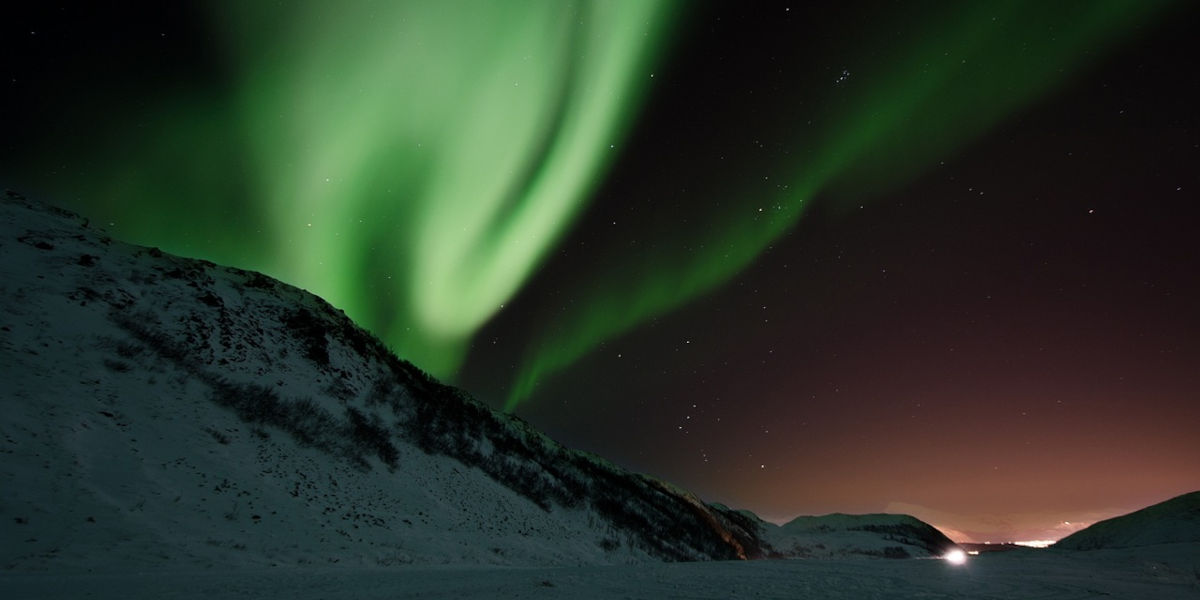Have you ever looked up into the night sky in wonder, captivated by the beautiful glow of light dancing across the star-studded velvet black? That otherworldly light show, fondly named after the Roman Goddess of dawn, Aurora, is a phenomenon as stunning as it is mystifying. But what causes Auroras - this magnificent spectacle that has evoked awe and inspired myths and legends across different cultures? The answer lies in some fascinating science, a spirited dance between the Earth's magnetosphere and the solar wind.
Most people know the two main types of Auroras as Aurora Borealis, found in the northern hemispheres, and Aurora Australis, found in the southern hemispheres. Yet, few understand the complex cosmic play that unfolds in the heavens to create these natural light shows. To fully comprehend this mesmerizing spectacle seen usually near the polar regions, one must delve into the understanding of solar wind and the science of the Aurora Borealis.
Understanding Solar Wind
Our sun is more than just a fiery ball of light and heat; it is a hotbed of activity. As thermonuclear reactions occur within it, the sun continuously emits a stream of charged particles primarily composed of electrons and protons in all directions. This stream of particles is known as the solar wind. This solar wind is integral to the phenomenon of auroras.
But how, one might wonder, does solar wind come to interact with our planet to create this light spectacle? Before we delve into that, it's essential to understand that our planet doesn't merely stand vulnerable to these electrically charged particles from the sun.
Ever since its formation, the Earth has nurtured a protective shell around it known as the magnetosphere. This magnetic field serves to deflect most of the harmful solar particles. However, a portion of these particles is trapped by this field, funneled towards the magnetic poles, and interacts with the particles in our planet's atmosphere to light up the sky brightly in hues of green, pink, yellow, blue, and red. The dazzling shape-shifting glow in the polar sky that ensues is the aurora - a visually stunning light show of nature.
The Science of Aurora Borealis
The science of Aurora Borealis, or the Northern lights as they are commonly called, is both captivating and complex. To understand it, we must start with the collision of particles. As the trapped solar wind particles surge towards the Earth's upper atmosphere, they collide with oxygen and nitrogen atoms. This collision triggers an exciting process where the atoms get 'excited' and then fall back to their original 'ground state'.
The extra energy required to return to this state is released in the form of light. Different gases give off different colors when they return to their ground state. Oxygen gives off a green light, for example, while Nitrogen tends to emit blue or red light. This interplay of light and gas creates the magnificent, sometimes multi-colored, illumination known as the Aurora Borealis.
What Causes the Aurora?
The dazzling spectacle we recognize as auroras, often referred to as polar lights or northern lights (Aurora Borealis) and southern lights (Aurora Australis), is actually the result of collisions between electrically charged particles from the sun that enter the earth's atmosphere. To understand this in more depth, we must first delve into some basic solar system science.
Our sun is a spinning ball of hot, electrified gas. Occasionally, it emits showers of charged particles, also known as a solar wind. This solar wind is hurled into space at speeds of about one million miles per hour. Around 40 hours after a solar ejection, these particles can reach our planet, but they mostly get deflected by Earth’s magnetic field. However, at both our planets' poles, the magnetic field is weaker, enabling some particles to enter the Earth's atmosphere and collide with gas particles.
The energy released during these collisions can be perceived in the form of colored lights, rippling and swirling in the polar sky - the phenomenon we call an aurora. The different colors of the auroras come from different types of gas particles. For instance, green, the most common color, is produced by oxygen molecules located about 60 miles above Earth, while rare red auroras are produced by high-altitude oxygen, at heights of up to 200 miles. Nitrogen produces blue or purplish-red auroras.
How Do We Predict Auroras?
Some of us are fortunate enough to have this natural drama unfolding right above our heads, yet the residents of higher latitudes consider it part of their routine life. But wouldn't it be nice if we could predict them? Like weather forecasting, aurora forecasting is also possible, owing to the advancements in space weather science.
Aurora in Myths and Folklores
The vibrant ribbons of light aren't just a scientific curiosity but have been a part of the myths and legends ingrained in the culture of people living in the high latitudes, namely the Inuit (Eskimos), Sami, and Vikings. Folklore about this natural wonder passed down through generations breathes life into the tales of our ancestors.
From being considered the dance of the spirits by the Inuits, to the Vikings viewing the Northern Lights as the armor of the Valkyries leading fallen warriors to Valhalla, the diverse portrayal of auroras in these tales highlights the human penchant for interpreting nature's magic through their cultural lenses.
Conclusion
Scientific or mythical, whichever realm you lean towards, the auroras never fail to captivate and inspire awe in us. So if you're ever lucky enough to be under a sky lit up by a dazzling aurora, take a moment, marvel at the spectacle, and remember – you're seeing with your own eyes the fantastic intricacies of the universe at work.




